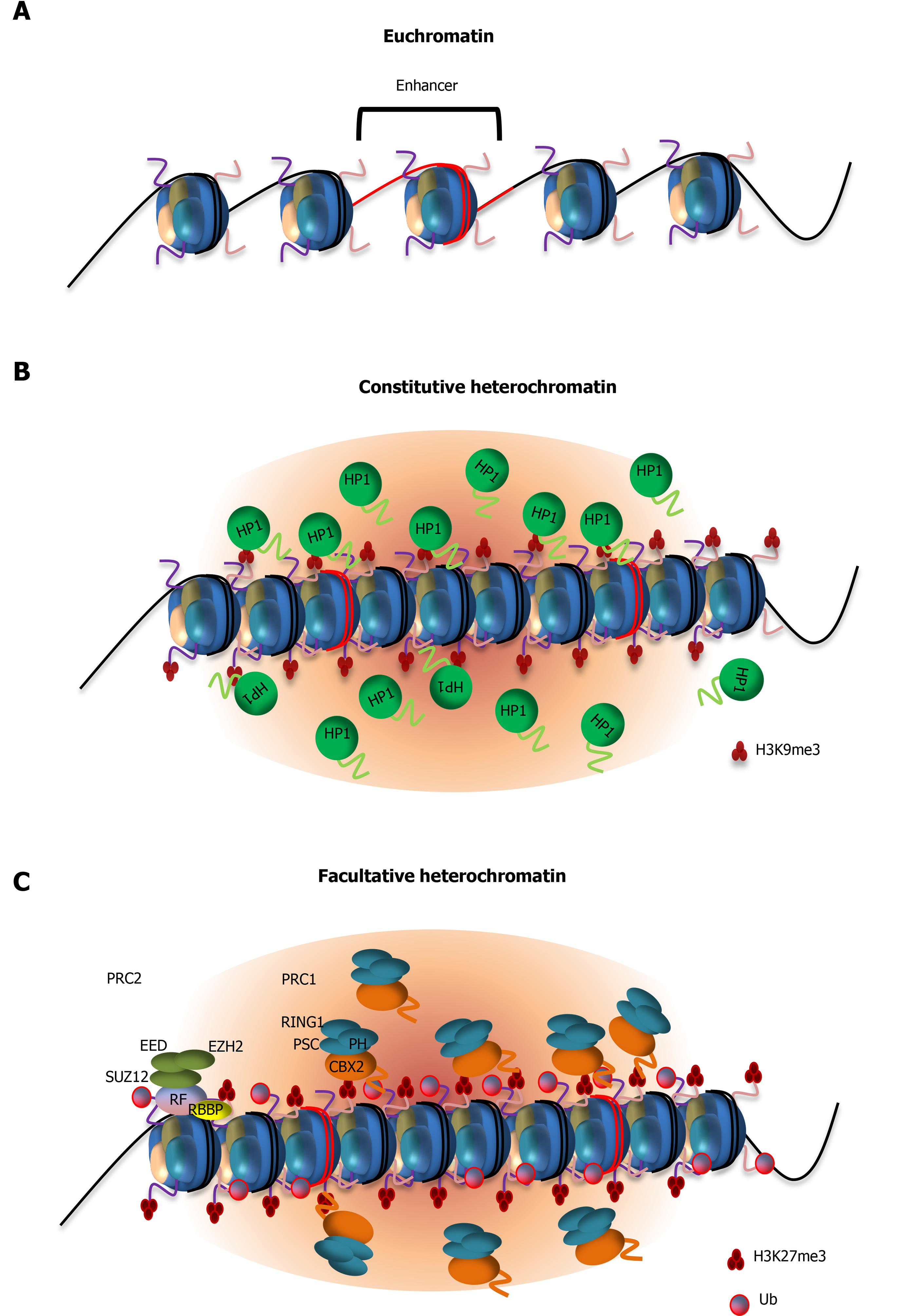Copyright
©The Author(s) 2021.
World J Stem Cells. May 26, 2021; 13(5): 416-438
Published online May 26, 2021. doi: 10.4252/wjsc.v13.i5.416
Published online May 26, 2021. doi: 10.4252/wjsc.v13.i5.416
Figure 2 Models showing the role of low complexity domain-mediated protein condensation in gene silencing by heterochromatin formation.
A: Euchromatic regions showing nucleosome-depleted regions containing transcription factor binding sites such as enhancers. Nucleosome-free regions are accessible by transcription factors and thus permissive to gene activation; B: Formation of constitutive heterochromatin requires interactions between heterochromatin protein 1 (HP1) and histone H3 Lysine 9 trimethylation and low complexity domain (LCD)-driven condensation of HP1 with DNA; C: Establishment of facultative heterochromatin is initiated by deposition of histone 3 Lysine 27 trimethylation (H3K27me3) by the histone methyltransferase subunit of polycomb repressive group 2 (PRC2), enhancer of zeste homolog 2. Binding of PRC2 to chromatin is regulated by non-core subunits (e.g., Jumonji and AT-rich interaction domain containing 2, polycomb-likes) which act as recruitment factors[178]. Chromatin compaction is then mediated by the recruitment of PRC1, through recognition of H3K27me3 by its subunit chromobox 2 (CBX2). CBX2 contains an LCD that drives phase separation of PRC1 and is required for proper heterochromatin formation. Subsequent mono-ubiquitination of histone 2A lysine 119 by the ring finger protein 1 subunit of PRC1 is essential for gene silencing. CBX2: Chromobox 2; EZH2: Enhancer of zeste homolog 2; H3K9me3: Histone 3 Lysine 9 trimethylation; H3K27me3: Histone 3 Lysine 27 trimethylation; HP1: Heterochromatin protein 1; JARID2: Jumonji and AT-rich interaction domain containing 2; PCL: Polycomb-like; PRC: Polycomb repressive group; RING1: Ring finger protein 1.
- Citation: Vodnala M, Choi EB, Fong YW. Low complexity domains, condensates, and stem cell pluripotency. World J Stem Cells 2021; 13(5): 416-438
- URL: https://www.wjgnet.com/1948-0210/full/v13/i5/416.htm
- DOI: https://dx.doi.org/10.4252/wjsc.v13.i5.416









